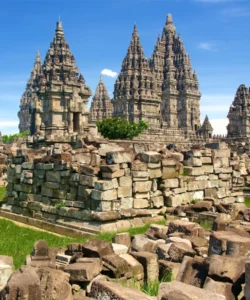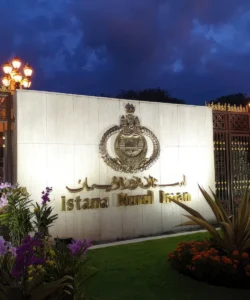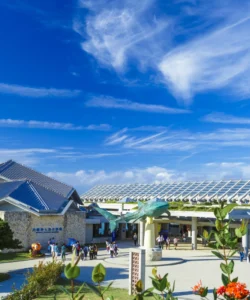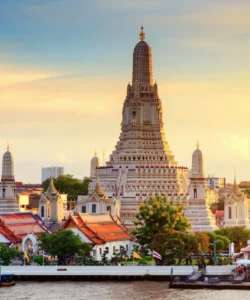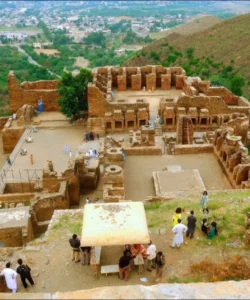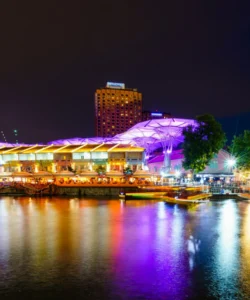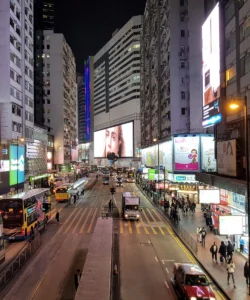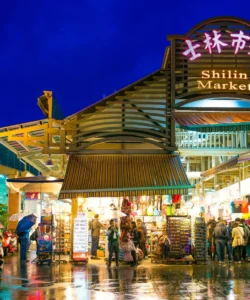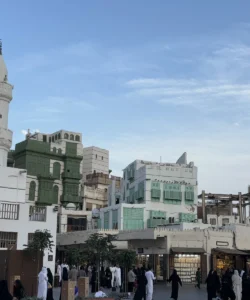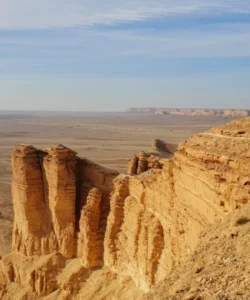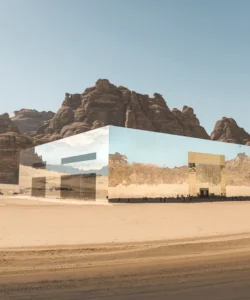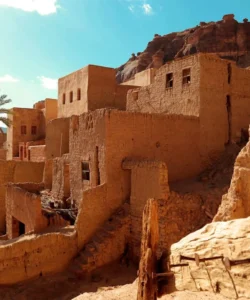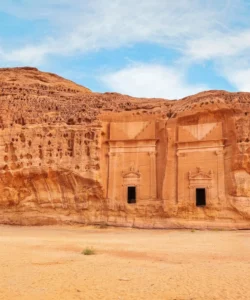AlUla Old Town, also known locally as Al-Dirah, is a captivating historical settlement located in the AlUla Oasis, within the Medina Province of Saudi Arabia. It is a labyrinthine maze of mud-brick houses and ancient structures, providing a tangible link to millennia of human history and trade in the Arabian Peninsula.
Name: AlUla Old Town (Arabic: البلدة القديمة (العلا), al-Balda al-Qadīma (Al-ʿUla); also Al-Dirah)
Address: AlUla Old Town, AlUla, Medina Province, Saudi Arabia. It is nestled in the narrowest stretch of the AlUla Valley, a short walk from the modern town of AlUla.
How to Get There:
AlUla Old Town is a central attraction within the broader AlUla region, which is becoming increasingly accessible.
- By Air to AlUla (ULH): The most convenient way is to fly directly into AlUla International Airport (ULH). Domestic flights connect from major Saudi cities (Riyadh, Jeddah, Dammam), and international flights may be available (e.g., from Dubai). From the airport, it’s about a 30-minute drive to AlUla town.
- By Road to AlUla: AlUla is accessible by road from major cities in Saudi Arabia.
- From Medina: Approximately 350 km (4 hours) drive.
- From Jeddah: Approximately 8 hours drive.
- Renting a car in Saudi Arabia (e.g., from Jeddah or Riyadh) and driving to AlUla is an excellent option for exploring the wider region.
- From AlUla Town to Old Town:
- AlUla Old Town is a short walk from the AlJadidah Arts District and accessible from most hotels in AlUla town by taxi or arranged transport.
- Organized tours of AlUla often include a visit to the Old Town.
- Within the Old Town: The Old Town is best explored on foot. There are designated walkways and restored sections. Local guides are available and highly recommended to provide historical context.
- Best Time to Visit: The cooler months from October to April are ideal for visiting, as temperatures in the desert can be extremely high outside of these months. Visiting early in the morning or late afternoon offers softer light for photography and more pleasant temperatures.
Landscape and Architecture:
AlUla Old Town’s “architecture” is a unique example of vernacular mud-brick construction, meticulously adapted for sustainable community living in an oasis environment. Its landscape is defined by the fertile oasis set against dramatic sandstone cliffs.
- Mud-Brick Houses: The town is a labyrinth of tightly packed, multi-story mud-brick houses, constructed from local materials such as mud-brick, stone blocks, and date palm wood. These natural materials provide excellent insulation against the desert’s extreme temperatures, keeping interiors cool in summer and warm in winter.
- Interconnected Labyrinthine Streets: The Old Town features a dense, maze-like network of narrow, winding alleys and covered passages. These narrow streets were designed for defense and provided shade from the sun, fostering a sense of community and security.
- Fortification and Watchtower: Above the Old Town, a 10th-century fort (AlUla Fort) still watches over the town from a 45-meter-high red sandstone structure, serving as a defensive lookout. The compact nature of the houses also contributed to the town’s fortification, making it appear like a single, massive building.
- Five Town Squares (Rahbas): The town had designated public spaces or squares (rahbas) for communal gatherings and trade.
- Sustainable Design: The architecture reflects sophisticated sustainable strategies developed over centuries, including passive cooling techniques, natural ventilation, and efficient use of local resources.
- Integration with the Oasis: The Old Town is strategically built adjacent to and intertwined with a lush, fertile oasis with abundant date palms and citrus trees. The presence of underground aquifers and ingenious irrigation systems (like qanats and a sundial-controlled water distribution system called Tantora) allowed the town to thrive in the arid desert.
- Al-Mabiyat Connection: The town often reused stones from older Dedanite and Lihyanite ruins from nearby ancient sites like Al-Mabiyat, indicating a continuity of human settlement in the region.
- Recent Abandonment and Restoration: The town was continuously inhabited from the 12th century until as recently as the 1980s, when residents moved to a new modern center. This relatively recent abandonment has left the architecture largely untouched by modern alterations, providing an unprecedented level of authenticity. Extensive restoration efforts are now underway by the Royal Commission for AlUla (RCU) to preserve and revitalize the site.
- AlJadidah Arts District: A vibrant new arts and culture hub, built adjacent to the Old Town, features modern architectural interventions that often draw inspiration from traditional patterns and materials, creating a dialogue between the old and new.
What Makes It Famous:
- Ancient Oasis City on Incense Trade Routes: AlUla Old Town is renowned as a major historical oasis city that flourished as a crucial stop along the ancient Incense Trade Route for centuries, connecting the Arabian Peninsula to the Mediterranean and beyond. It was also a vital pilgrimage stop from Damascus to Mecca.
- Living Museum of Traditional Architecture: It is a remarkable example of a well-preserved, relatively recently abandoned mud-brick town, offering an authentic glimpse into the traditional way of life and vernacular architecture of the region, almost like a “living museum.”
- UNESCO World Tourism Organization’s “Best Tourism Village”: AlUla (encompassing the Old Town, Oasis, and AlJadidah Arts District) was awarded this prestigious title, recognizing its rich cultural and natural assets and commitment to sustainability.
- Historical Layers: The site’s history stretches back millennia, with evidence of human settlement since 5000 BCE and connections to ancient kingdoms like Dedan and Lihyan, offering a deep archaeological narrative.
- Community Life and Resilience: The tightly packed, interconnected houses reflect a cooperative community life adapted for centuries to the harsh desert environment, demonstrating remarkable resilience and ingenuity.
- Strategic Location: Its position as a critical node for trade, pilgrimage, and agriculture in the desert makes it a key historical and geographical wonder.
- Ongoing Restoration and Revitalization: The ambitious efforts by the Royal Commission for AlUla to meticulously restore and open the Old Town for sustainable tourism, while preserving its authenticity, have brought it significant international attention.
Differences from Some Other Wonders:
- Recently Abandoned Mud-Brick Settlement: While other ancient cities exist (e.g., Mohenjo-daro, Harappa, Taxila), AlUla Old Town is unique for being a large, complex mud-brick settlement that was continuously inhabited until the 1980s. This very recent abandonment means its urban fabric and houses are remarkably well-preserved without modern alterations, offering an intimate, “frozen in time” glimpse of traditional life that’s distinct from much older ruins.
- Oasis-Dependent Urbanism: Unlike river valley civilizations (like Mohenjo-daro on the Indus) or coastal cities, AlUla Old Town’s existence and prosperity were entirely dependent on its lush desert oasis and ingenious water management systems. This specific relationship between human settlement and a vital desert water source is a defining characteristic.
- No Monumental Temples/Palaces (within Old Town itself): While nearby Hegra has monumental rock-cut tombs, AlUla Old Town itself is famous for its vernacular residential and commercial mud-brick architecture, without the grand, singular palaces or temples found in many other ancient cities (e.g., Lahore Fort, Angkor Wat). Its grandeur is in its collective, dense urban fabric.
- Focus on Trade Route and Pilgrimage Stop: Its fame is strongly linked to its specific historical role as a critical stop on the Incense and Pilgrimage Routes, facilitating exchange and interaction between diverse cultures, rather than solely being a capital city or a religious center.
- Contrast with Modern Development: The stark contrast between the traditional mud-brick Old Town and the rapid, cutting-edge modern development (like Maraya, Sharaan Resort) in the wider AlUla region creates a compelling dialogue between past and future.
- Microclimate Creation: The tightly packed houses and narrow alleys were designed not just for defense but also to create a microclimate of shade and airflow, an ingenious response to the desert heat, making the urban design itself a form of climate-responsive architecture.
- Living Heritage with Local Engagement: The current revitalization emphasizes local community involvement and sustainable tourism, aiming to make it a living heritage site that continues to support local livelihoods, making it different from a purely archaeological site.
AlUla Old Town Photos:































